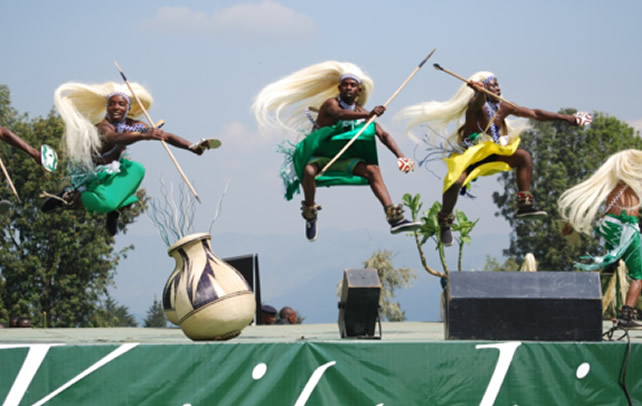Scientifically called the Gorilla beringei graueri, the eastern lowland gorillas are found in the mountainous-forested regions of the Democratic Republic of Congo in the Kahuzi Biega national park. They are the largest sub specie of the gorillas in the whole world, a sub specie of the eastern gorillas, the male adult gorilla can weigh up to 272 kilograms but females weigh quite less. The other three species are the mountain gorillas, cross-river gorilla and the western lowland gorillas.
The evolution of the gorilla is not clear but Kimbel a researcher about primates found out that the gorilla developed as single specie after which they developed into subspecies (mountain gorillas, cross river gorillas, eastern lowland gorillas and western lowland gorillas) distinguished by a few differences.
Presently the population of the eastern lowland gorillas has rapidly decreased to only 3800 individuals as of 2016 gorilla census. The population was high counting to 16,900 individuals in 1995, which kept decreasing to 5000 in 2004, and to 3800 in 2016. This indicates that the rare species are highly endangered, and are at the high risk of extinction.
This decrease of approximately 77% qualifies the gorilla specie to be categorized as the critically endangered specie and put under the care of the international union conservation of nature (IUCN).
The decrease in the eastern low land gorillas has been due to several factors, which include poaching. This is done by the armed people who fled to seek refuge in the national park due to the civil wars in the democratic republic of Congo. Also local people who entirely depend on the forest for livelihood hunt down the specie for meat and selling.
Habitat losses along side degradation are threats too. The local people in the democratic republic of Congo are mainly agriculturalists who encroach on the forest for expanded agricultural land.
Concerning the physical description, the short muzzle, large hands, short hair, short teeth and stocky body distinguish the eastern lowland gorilla from other gorilla subspecies. The brown coat of the silverbacks is same in all gorilla species.
On the food they feed on, the endangered species are herbivores and mainly depend on leaves and other vegetation, they rarely feed on fruits. Feeding is done in the early morning after which they rest in the afternoon ad then in the early evening as they head to the sleeping site for that very day.
Concerning behaviors, the eastern lowland gorillas live in families ranging from 2-30 individuals. Each family is headed by one silver back that plans for and defends re entire group from any attack. Females in the family nurse the young ones, which is the real demonstration in a home.
The reproductive cycle in the eastern lowland gorilla is quite slow just like other gorilla species. The silver back is the one to mate with all the female adults in the entire family. Each female give birth to one baby gorilla in about every four years and the baby keeps with the mum for at least 3 to 4 years after which they start moving alone.
Due to the increased loss of the eastern lowland gorillas, the species has been listed under class A of the African convention and Appendix1 of the convention on international trade in endangered species (CITES). In addition to that, the government of the democratic republic of Congo has put legal framework to manage national parks especially the Kahuzi Biega with the support of various nongovernmental organizations.
In conclusion therefore, its evident that mountain gorillas have been conserved and saved from extinction mainly due to the introduction and proper management of mountain gorilla trekking safaris in Africa; Volcanoes National Park, Bwindi, Mgahinga and Virunga National parks. Hence a great need for lowland gorilla conservation through introdiction of properly manged tourism system to aid in the conservation efforts the critically endangered eastern lowland gorillas in the kahuzi biega national park. This calls upon, governments, nongovernmental organizations, park managers, local people and travelers to care for the species so a to ensure sustainability.
